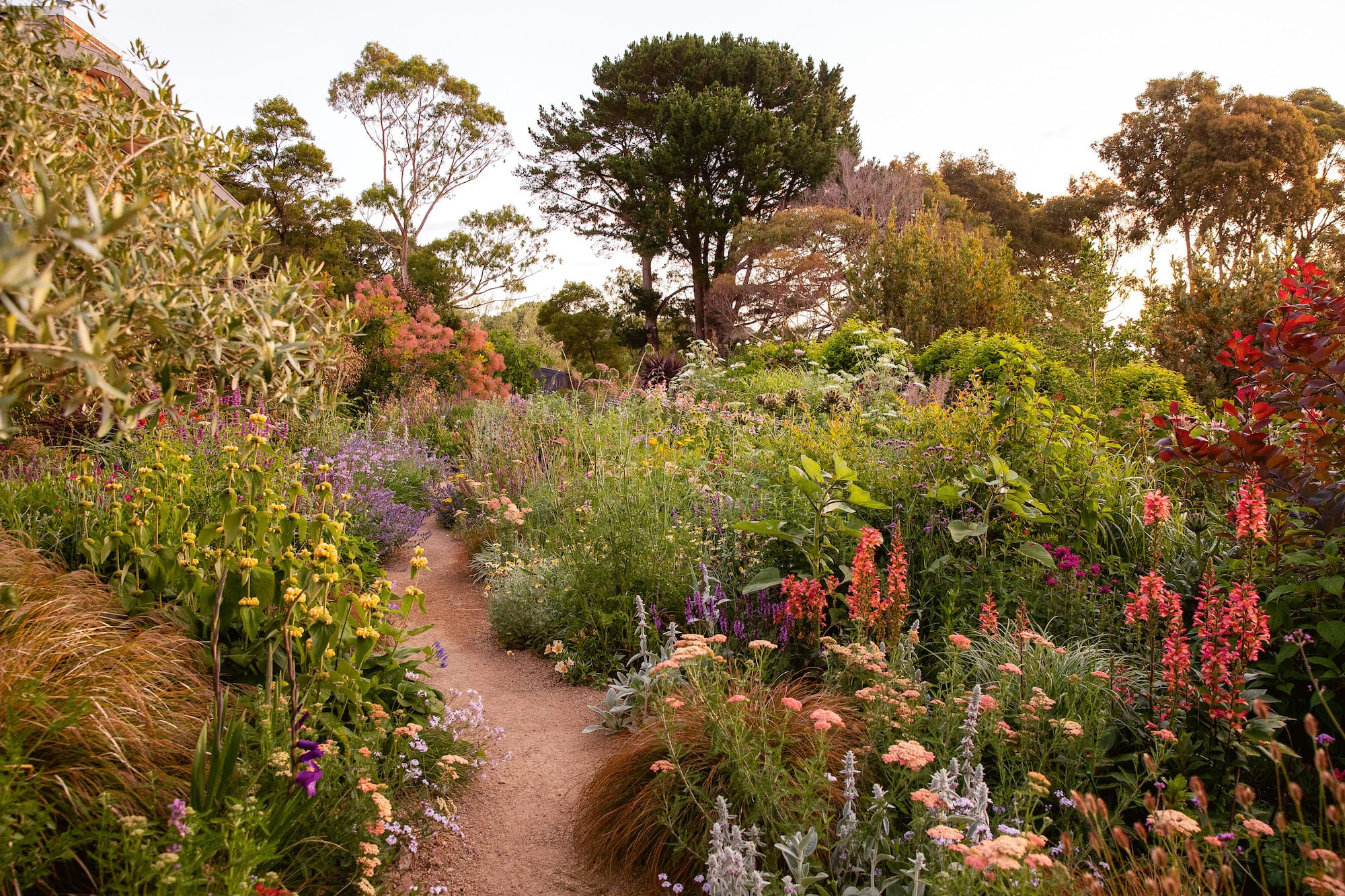
A windy hilltop on the Mornington Peninsula was the blank canvas on which Ann-Maree Winter tested her courage and became a gardener.
Words Megan Backhouse
Photography Martina Gemmola
‘‘I SPENT a lot of time inside hiding from the garden. I just couldn’t wrap my head around the scale of the place.”
When Ann-Maree Winter describes her first months in her new home on Victoria’s Mornington Peninsula, she often circles back to her apprehension. It was 2016 and she and her husband, Paul, had just moved from 450 square metres in the Melbourne suburb of Parkdale to 28,000 square metres (or seven-odd acres) in Arthurs Seat.
Instead of an intensely gardened, intricately considered urban plot, they had a big, bare slate. They’d swapped sandy soil for rich clay, mains water for a reliance on tanks, and a protected microclimate for a wide-open hilltop. The spectacular views of the surrounding countryside were a central feature, but so were the lacerating westerlies. It was exciting and overwhelming in equal measure.
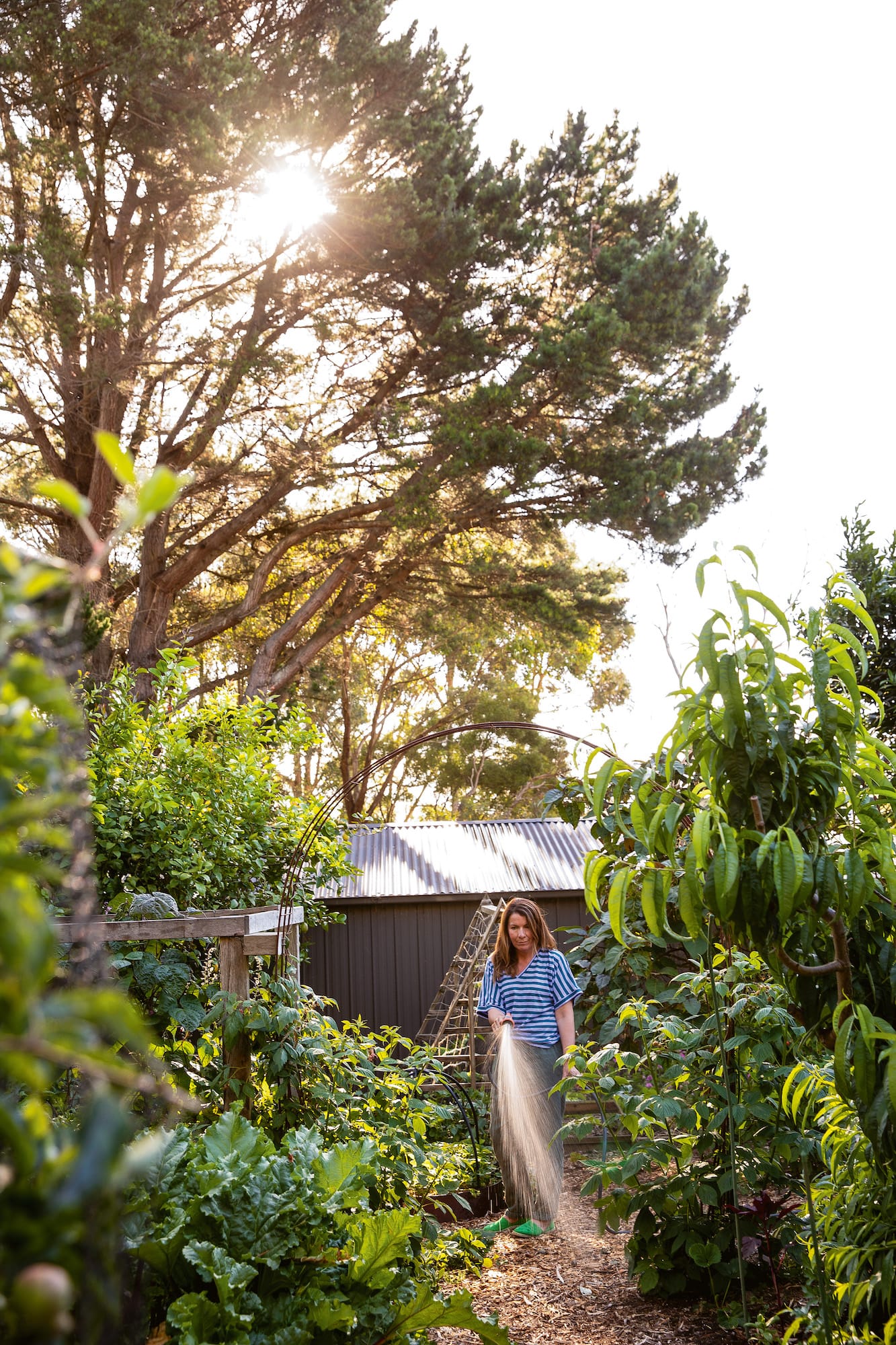
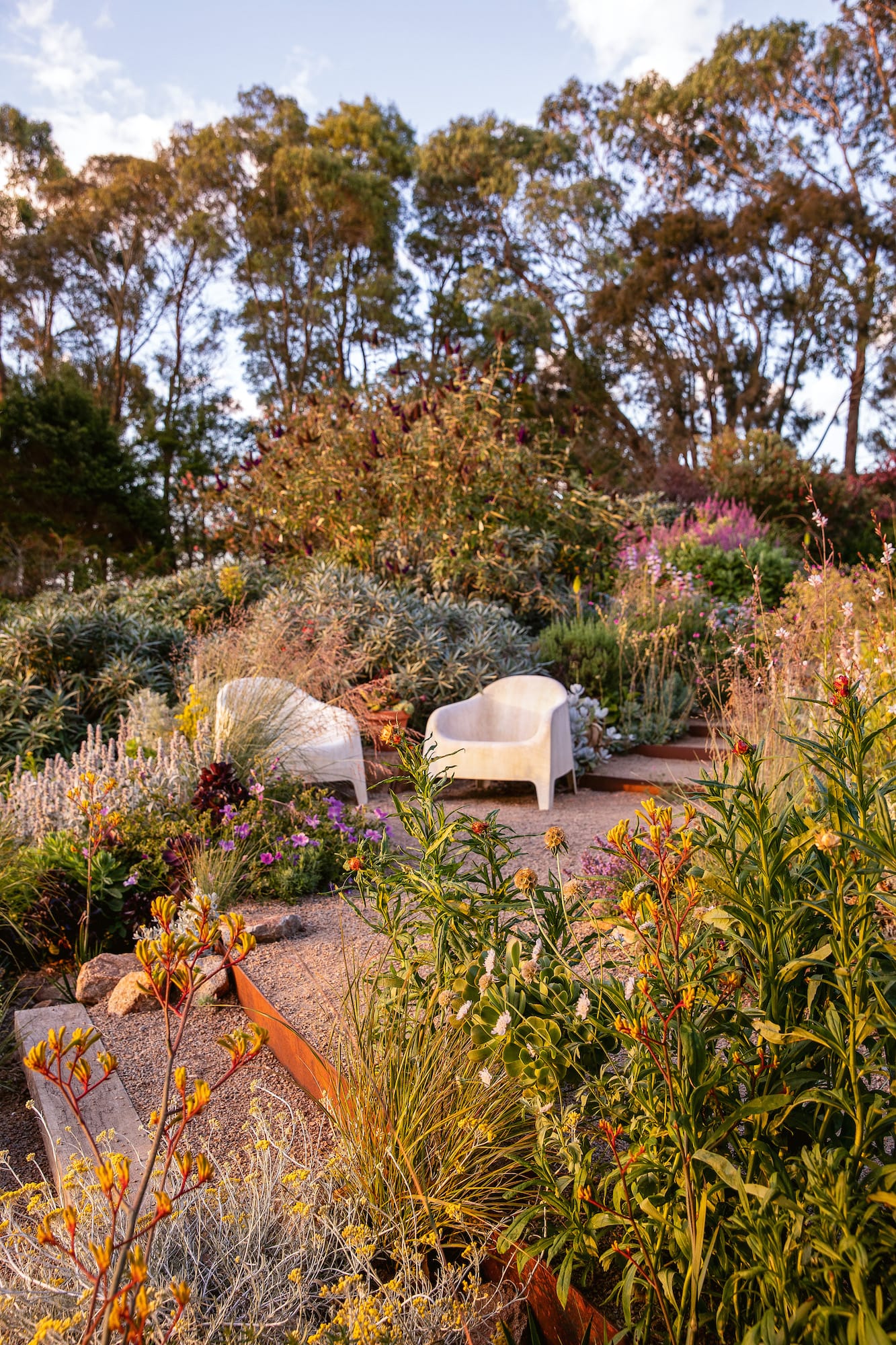
“As soon as we saw this place, we loved it for the view,” says Winter. “But I didn’t really understand what I’d taken on. Everything I knew about gardening didn’t make sense here. In Parkdale, I could take a cutting and whack it in; here, I would have to take 400 cuttings.”
Moreover, she found wide expanses of soil-depleting weed mat had been laid across the front garden. And then, when their first summer was particularly hot and dry, their rainwater tanks emptied early.
Coming to terms with the fact that some of the gardens she admired the most used more water than she was prepared to apply was one of Winter’s first steps. Another was removing the weed mat.
And then she just kept going. In the nine or so years since the couple moved in, Winter has turned what was largely sloping bare grass into a colourful and beguiling garden composed of many parts.
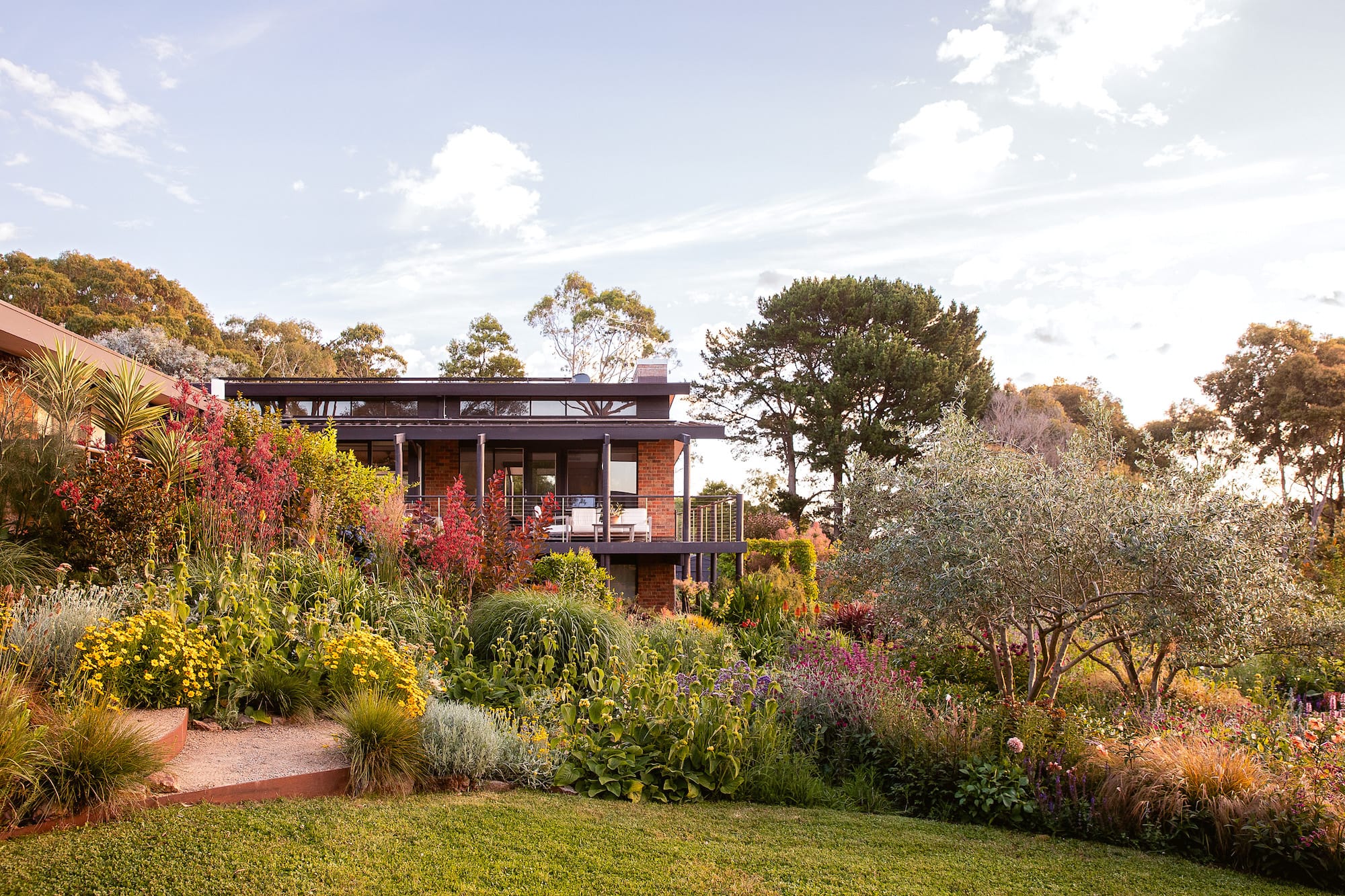
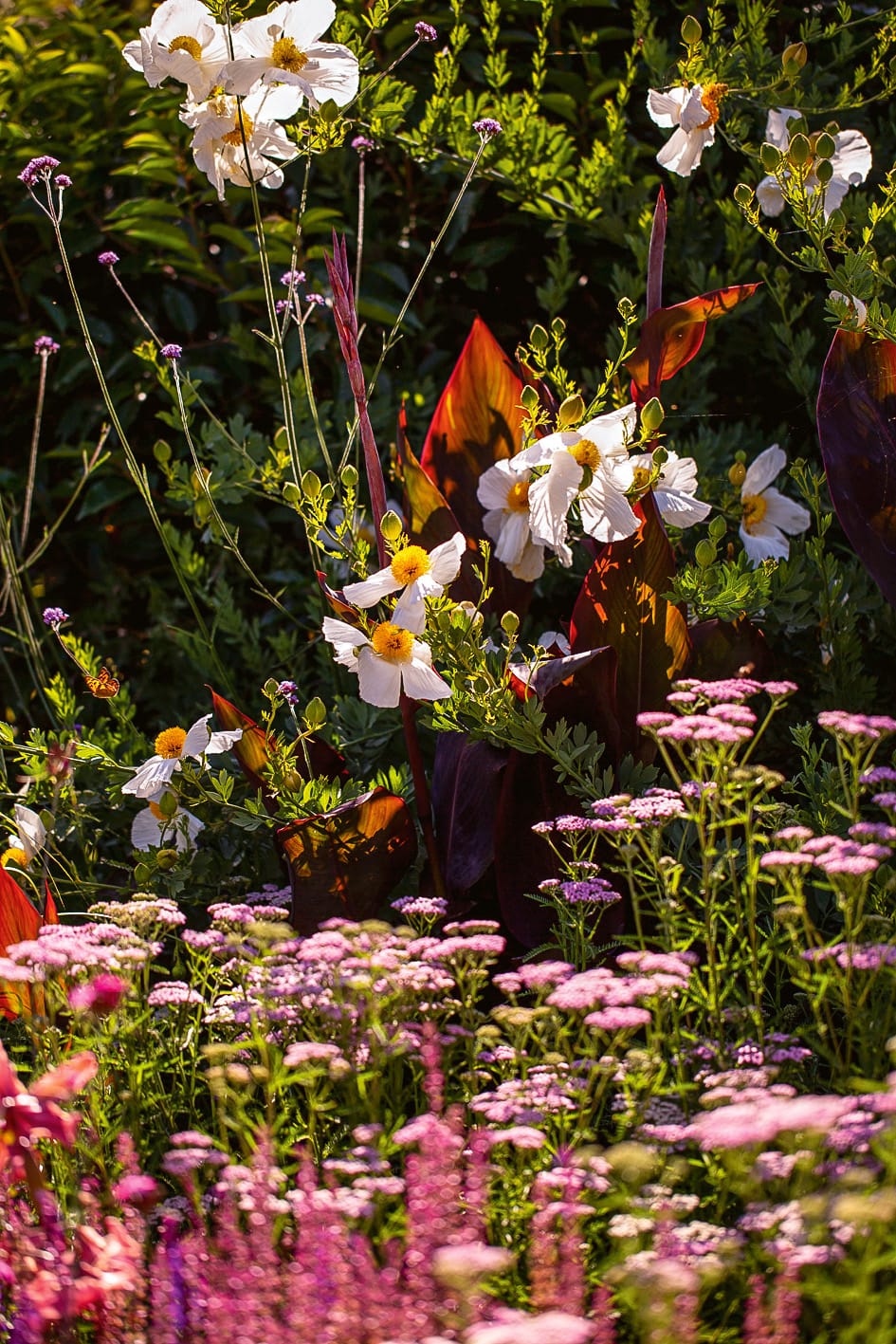

Looking back to the deck; white blooms of California tree poppy float above lilac Achillea and purple Salvia nemorosa ‘Caradonna’; the dam is planted with kangaroo grass and lomandra. Photography by Martina Gemmola.
The most theatrical area is immediately to the back of the house, a space overlooked by all the main living areas. This section of the garden has a series of circular lawns that are entirely engulfed by lively, leisurely tumbles of plants. Perennials, climbers, succulents and shrubs weave around each other, softening all the formal edges.
This lavish mix of foliage, flowers and seed heads is constantly in flux. When I visit in spring, an array of poppies are tangling with ‘Purple Rain’ alliums and Asiatic lilies (‘Purple Marble’ and ‘Red Velvet’). Undulating mounds of phlomis and fountains of Stipa gigantea are mixed with cornflowers, sweet peas, cerinthe, agastache, lychnis and chocolate Queen Anne’s lace. There are ‘Caradonna’ salvias, kangaroo paws, paper daisies and New Zealand wind grass. There are more plants than I can possibly list.
But within weeks, the palette will be changing. Other annuals and perennials will come to the fore and new bulbs will unfurl from the soil. Winter likes to leave no gaps. She has grown trays full of cosmos and zinnias that are now ready to fill openings as they appear.
It all feels dazzling and dramatic, whether you’re looking down on it from the house above or you’re immersed in it on the ground. Winter herself is pleased with the complex succession of layers but, like most gardeners, is also thinking about what she might change. She is still adding new plants and trying new arrangements.
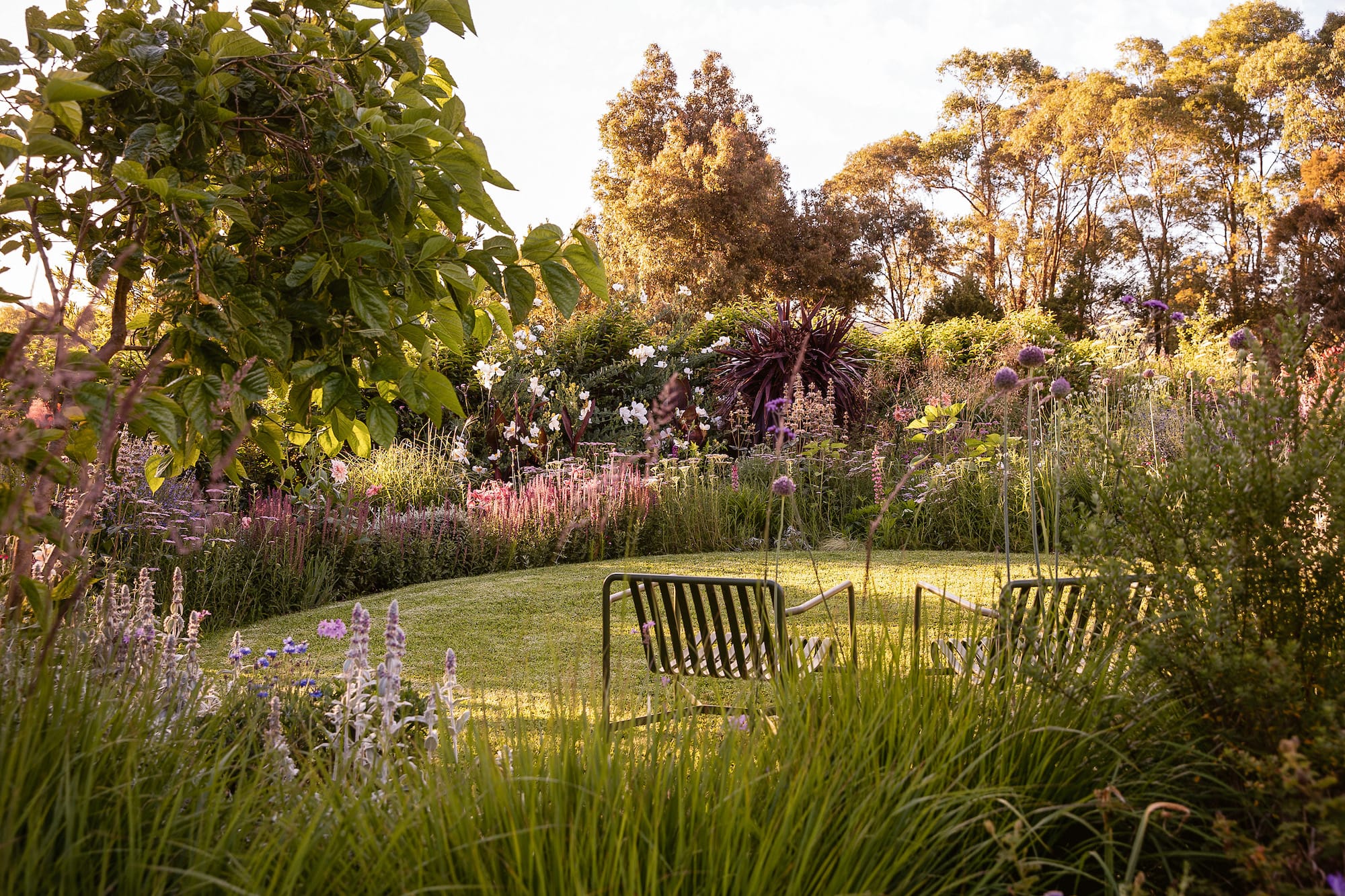
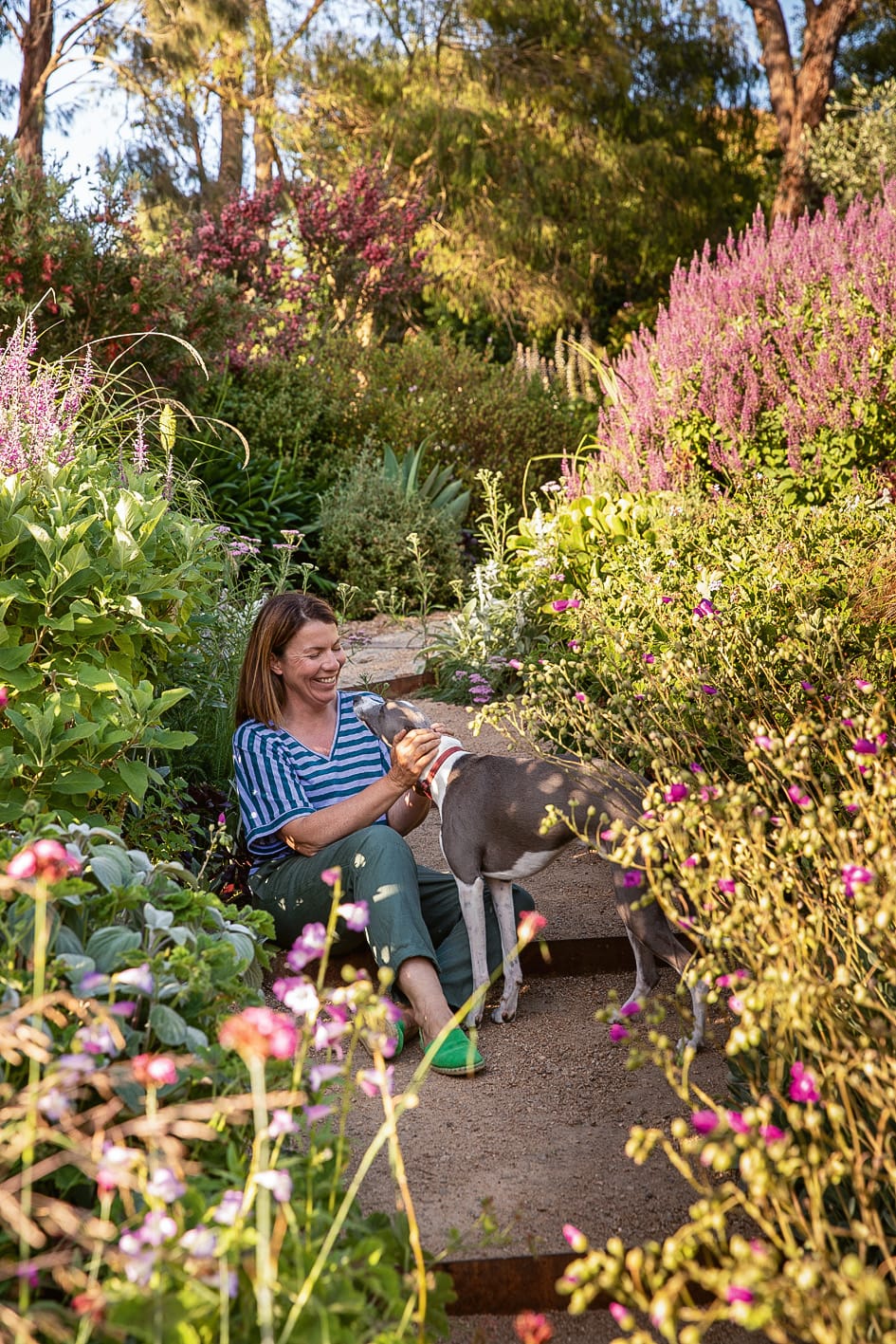
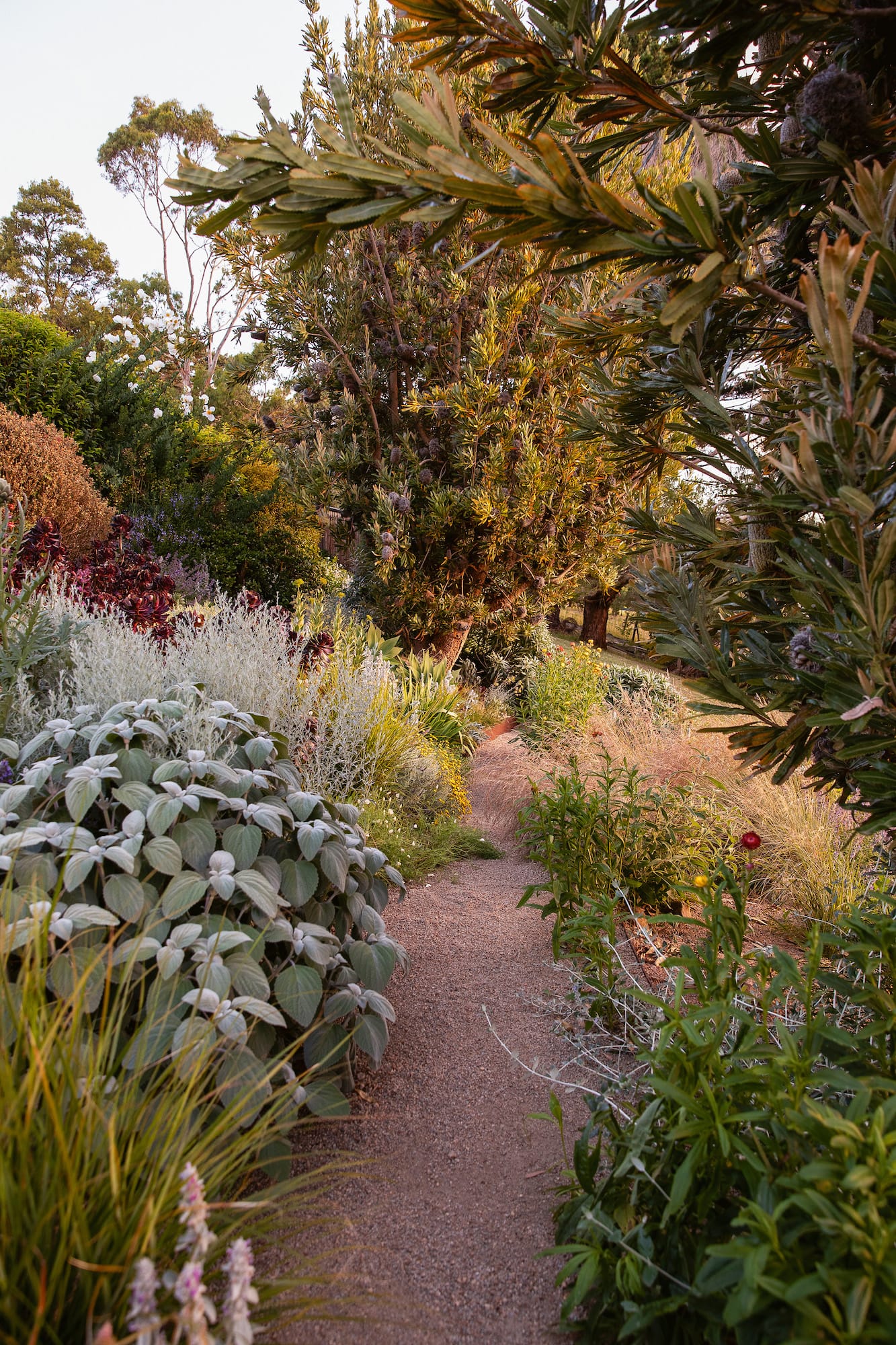
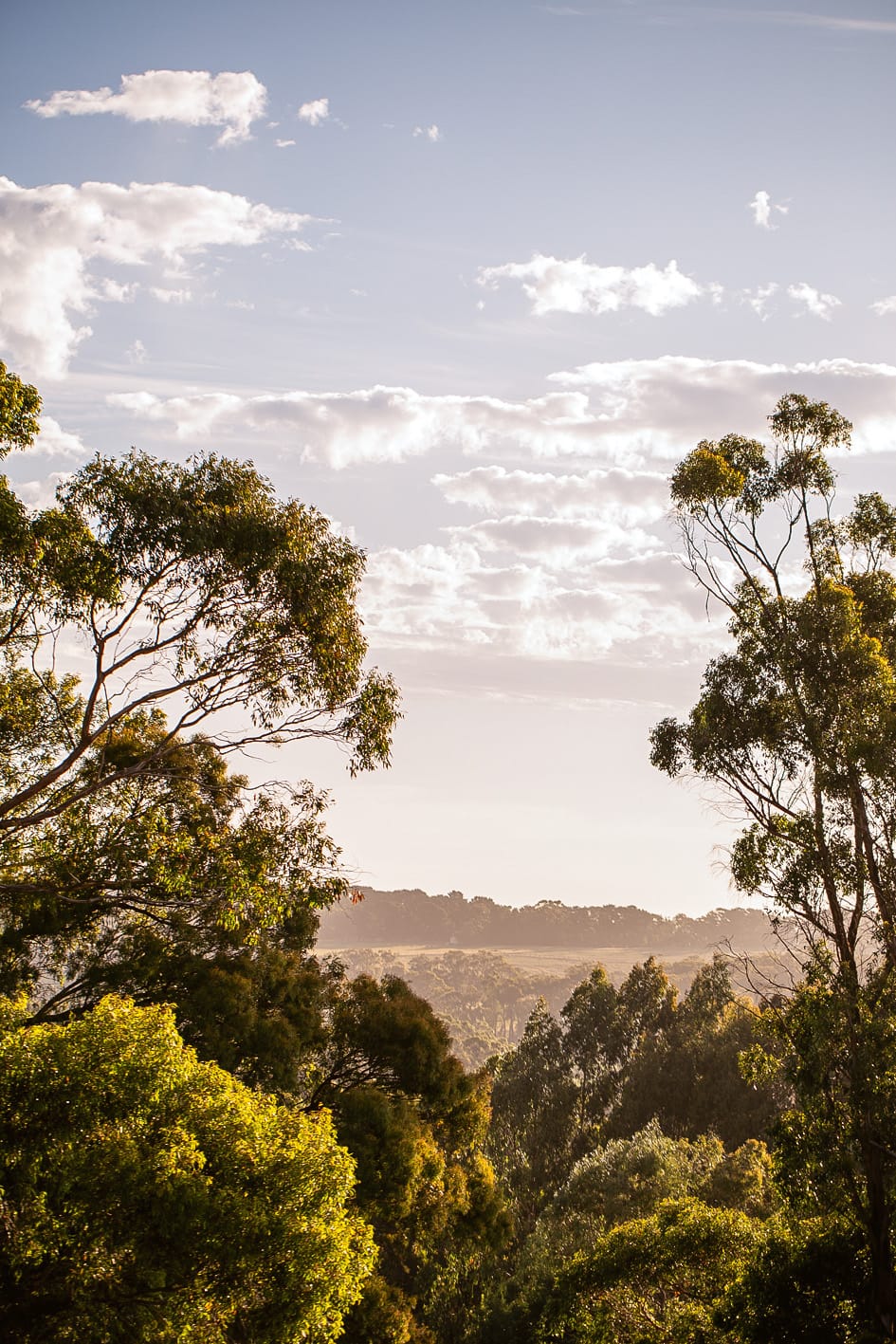
The lower lawn, shaded by a mulberry tree, is surrounded by perennials; Winter’s kelpie cross, Remi, joins her in the garden; the new, lower garden features Plectranthus argentatus and Banksia serrata; the view to the west. Photography by Martina Gemmola.
She says that sometimes she wonders whether the luxuriant feel around the house – where her soil is particularly rich and moisture-retentive – might be too much in some way. She says she doesn’t want it to feel like her plants are “screaming against the natural landscape”.
So now, as she is extending deeper into her seven acres and fashioning more garden beds in her one-time paddocks, she is choosing what she calls “calmer” plants, including kangaroo grass, billy buttons and chocolate lilies, which she is mulching with gravel.
A little further out and the mood gets even looser. This is the area that Winter is revegetating with the eucalypts, wattles, casuarinas and other plants that hail from the area. These indigenous layers lead your eye all the way to the forested areas beyond the bounds of the property.
Everywhere you turn, Winter has made her mark – and the garden has changed her, too. “The garden is what I think about all the time,” she says. “Most of the time, I’m gardening. It’s an obsession.” She is often working in it until twilight (“I’m trying to make myself stop for dinner”), and if she’s not gardening she is visiting other people’s gardens, reading about gardens or watching gardening workshops online.
It wasn’t always like this. Before Winter became so consumed by gardening, she was a teacher and before that studied gold and silversmithing at RMIT in Melbourne. “I graduated in 1992, but I never did anything with it,” she reflects. “I would look at other people’s work and think, you have it but I don’t. I never felt like I was creative enough.
“But I think with a garden there’s this feeling of starting with a blank page. This place was big but when you just get into the doing of it, you can get lost in the process. Then, a couple of years in, you’re away.”
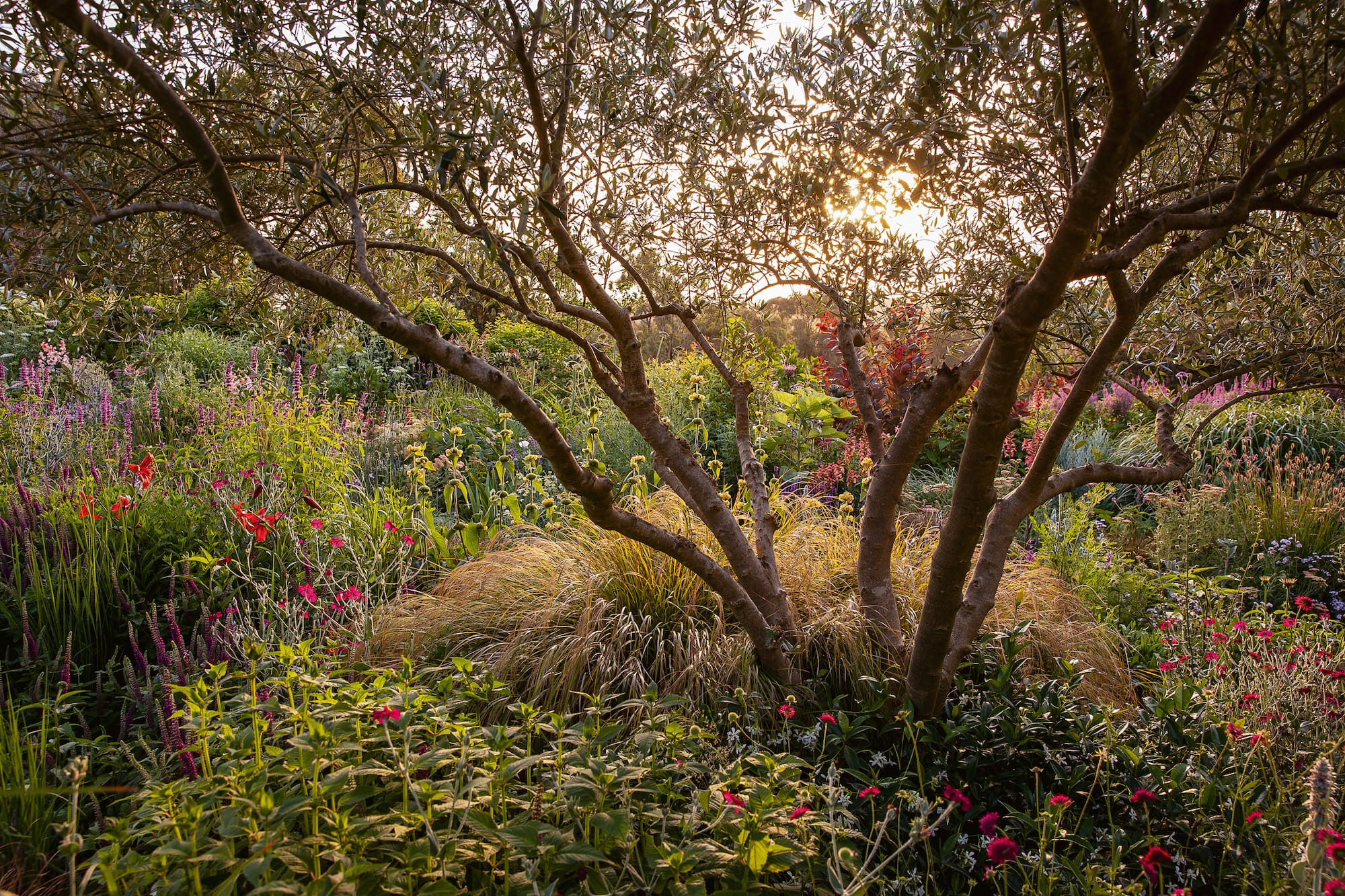
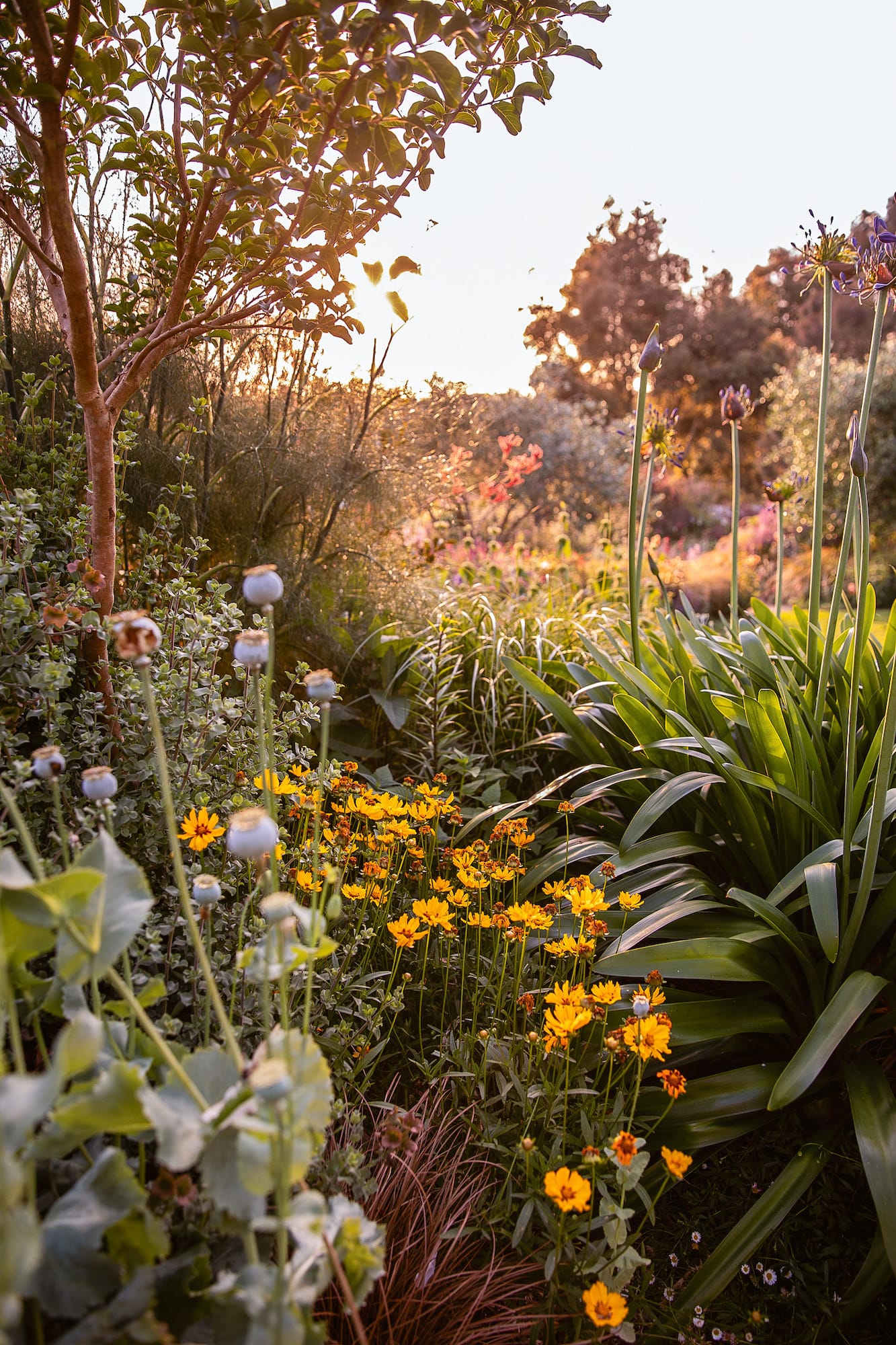
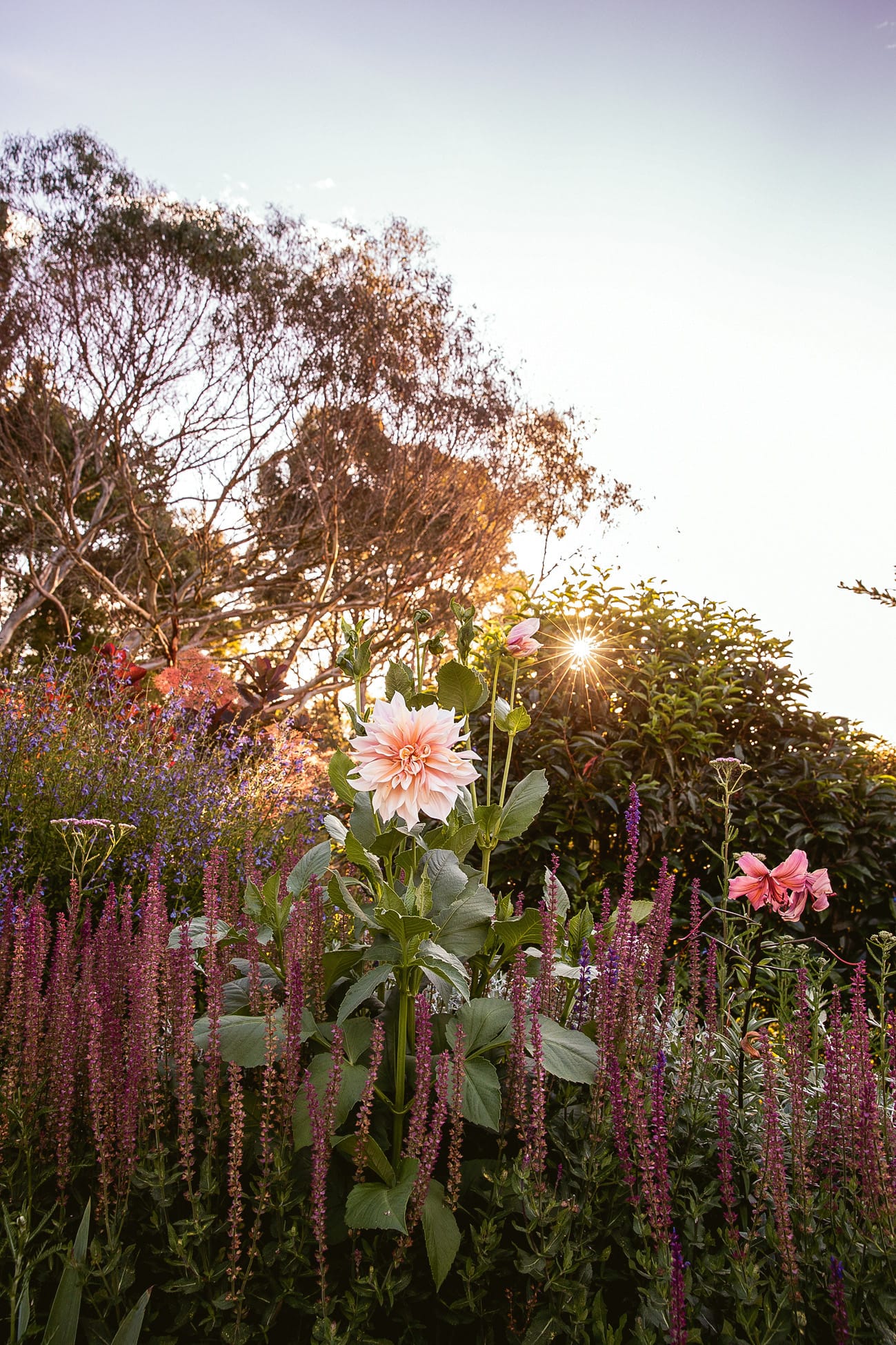
Perennials under the olive tree; poppy seed heads, Coreopsis, bronze fennel and dahlia. Photography by Martina Gemmola.
Before Covid, she also had a gardener, Julie Willis, working with her one day a week. “For me, it was like an apprenticeship,” says Winter. “We talked, workshopped ideas and gardened together. Like the way trades have always been passed on, I was learning as I was doing, and it just kept igniting more of a curiosity.”
But she insists she has “made mistakes at every juncture” and that her ideas about gardening are always evolving.
“I used to not like narrow leaves or a dry look; I felt it was depressing. Whereas now I look at some of the lush exotics I first loved and realise my taste has changed. But I don’t want to throw some of the early plantings out. It was a stage and what I want is to just have the garden growing out in rings.”
One of her latest projects is to rip out the tennis court at the front of the house and replace it with a new productive garden – she already has vegetable beds bound by espaliered fruit trees to one side of the property.
She’s pulled out the cyclone-wire fencing that surrounded the court, so that all the surrounding trees and shrubs can stretch out and look more relaxed, and she’s lifted the artificial-grass playing surface. Below this artificial grass was a concrete slab that Winter is now planning to have sliced open to create edible beds that will sit amid paths formed by those areas of the concrete slab that are retained.

“My current hero is John Little, the grass-roof guy who does ‘brownfield’ gardening,” Winter says. Little is an Englishman who makes gardens that incorporate all manner of building waste, including rubble and concrete, so you can see how he currently fits in.
But Winter has had lots of heroes along the way and, while she has gathered ideas from a variety of sources, her garden feels like no other. It is all-consuming and non-conforming.
What’s more, Winter relishes the scale of the place now. Far from being overwhelming, she has the room to do whatever she pleases.